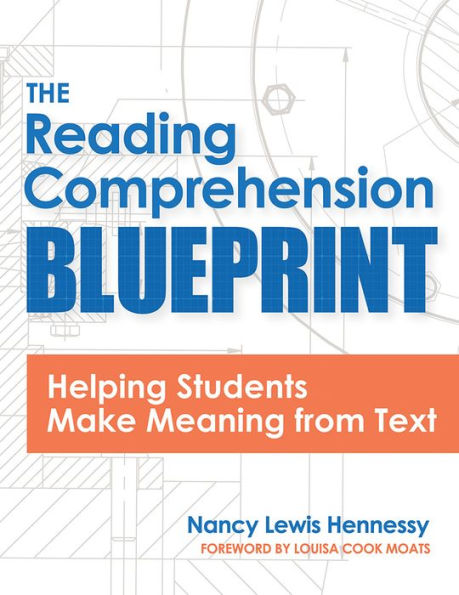Table of Contents
About the Downloads ix
About the Author xi
Foreword Louisa Cook Moats, Ed.D xiii
Preface xvii
Acknowledgments xix
Section I The Nature of Reading Comprehension 1
Chapter 1 Dimensions of Skilled Reading: Connecting to Educators' Critical Background Knowledge 3
The Blueprint Inventory of Reading Comprehension Knowledge 4
Connecting Skilled Reading to the Classroom 4
Surfacing Critical Knowledge: The Educational Context 4
Building Critical Knowledge: Proficient Reading 8
Summary: Critical Knowledge for Educators 13
References 14
Appendix 1.1 The Blueprint Inventory of Comprehension Knowledge 16
Appendix 1.2 The Blueprint Inventory of Comprehension Knowledge: Answer Key 20
Chapter 2 Viewpoints on Reading Comprehension 25
Connecting Reading Comprehension Research to the Classroom 26
Reading Comprehension Defined: Processes and Products 27
Comprehension Processes 28
The Role of the Reader, the Text, the Task, and the Context 30
Connections to Practice 33
Summary: The Multidimensional Nature of Reading Comprehension 35
References 35
Section II The Blueprint 37
Chapter 3 The Blueprint for Reading Comprehension Instruction 39
Connecting the Blueprint to the Classroom 40
The Challenge of Change 40
The Blueprint 43
Unpacking the Blueprint's Components 46
Summary: An Instructional Framework 54
References 54
Chapter 4 The Blueprint for Vocabulary 57
Connecting Vocabulary Instruction to the Classroom 58
Vocabulary Defined 58
Connections to Reading Comprehension 60
Designing and Delivering Comprehensive Instruction 62
Adapting to Individual Needs 81
Assessing Students' Vocabulary Knowledge 82
Summary: Helping Students Construct Word Meaning 85
References 86
Chapter 5 The Blueprint for Syntax and Sentence Comprehension 89
Connecting Sentence Comprehension to the Classroom 90
Syntax and Sentence Comprehension 90
Connections to Reading Comprehension 91
Designing and Delivering Comprehensive Instruction 100
Adapting to Individual Needs 113
Assessing Students' Sentence Comprehension 114
Summary: Helping Students Construct Meaning at the Sentence Level 116
References 116
Chapter 6 The Blueprint for Text Structures 119
Connecting Text Structures to the Classroom 120
Literacy Knowledge and Text Structures 120
Connections to Reading Comprehension 120
Understanding Text Structures 122
Designing and Delivering Comprehensive Instruction 124
Adapting to Individual Needs 143
Assessing Students' Understanding of Text Structure 143
Summary: Teaching Text Structure Effectively 144
References 145
Chapter 7 The Blueprint for Background Knowledge 147
Connecting Background Knowledge to the Classroom 148
A Perspective on Knowledge 149
Connections to Reading Comprehension 151
Designing and Delivering Comprehensive Instruction 153
Adapting to Individual Needs 163
Summary: Helping Students Use Knowledge to Construct Meaning 164
References 164
Chapter 8 The Blueprint for Levels of Understanding and Inference 167
Connecting to the Classroom 168
Levels of Understanding 168
Connections to Reading Comprehension 171
Inference Defined 172
Necessary Inferences: Local and Global Coherence 172
Designing and Delivering Comprehensive Instruction 179
Adapting to Individual Needs 187
Assessing for Levels of Understanding and Inference 187
Summary: Helping Students Use Inference to Construct Meaning 189
References 190
Section III Implementation 193
Chapter 9 The Blueprint: Making It Work 195
Planning for Instruction 197
Building Educator Expertise 203
Implementing Systemwide Educational Change 206
Summary: Implementing Instructional Change 206
References 211
Appendix 9.1 Blueprint Unit and Lesson Organizer 213
Appendix 9.2 Blueprint Lesson Organizer Examples 218
Appendix 9.3 Interactive Book Study Questions 228
Appendix: Instructional Tools and Templates 261
Blueprint for Reading Comprehension Instruction 262
The Vocabulary-Attuned Educator 263
Choosing Words: Fuzzy Problem Space 264
An Instructional Road Map for Vocabulary 265
Word Meaning Map: Noun 266
Word Meaning Map: Adjective 267
Simple Vocabulary Routine 268
The Sentence-Attuned Teacher 269
Basic Aspects of Narrative and Instructional Text 270
Basic Aspects of Informational Text 271
An Instructional Road Map for Text Structure 272
ABCs of Background Knowledge: Instructional Tools 273
The Inference-Attuned Teacher 274
Teacher and Student Steps for Global Inferences 275
Index 277






